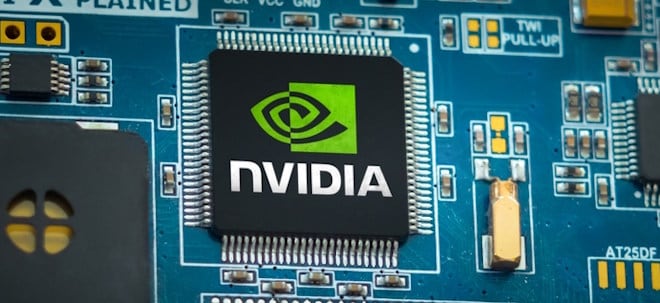The Edge-First Era Begins: How AI's Future Saves Millions and Amplifies Competitive Advantage
New economic analysis reveals 92% hardware reduction with edge AI deployment,
turning budget-busting pilots into scalable, profit-driven solutions
PRINCETON, N.J., May 21, 2025 /PRNewswire/ -- Enterprise artificial intelligence (AI) is poised for a significant economic shift, moving from cloud-centric models to edge-focused deployments that deliver substantial cost savings and scalability. "From Cloud-First to Edge-First: The Future of Enterprise AI," a new economic impact analysis by Latent AI, identifies 2025 as the critical inflection point where multiple factors: soaring cloud costs, persistent GPU shortages, and escalating energy expenses – converge to make edge AI financially advantageous. As a leader in edge AI solutions for national security and defense, Latent AI conducted this research to explore implementation challenges and opportunities in industries where rapid AI adoption is essential for maintaining competitive advantage.
Organizations can no longer afford compute costs of cloud-only solutions. This is where edge AI proves transformative."As enterprise leaders scale AI deployments, they must weigh performance gains against infrastructure investments when evaluating edge versus cloud strategies," said Jags Kandasamy, CEO and Co-founder of Latent AI. "With tighter budgets and growing demands for real-time processing, organizations can no longer afford the heavy computational costs of cloud-only solutions. This is where edge-optimized AI proves transformative. From Cloud-First to Edge-First explains how an edge-first approach reduces hardware requirements by 92% while preserving model accuracy, enabling broader AI deployment and enhancing competitive advantage."
Download the Report: From Cloud-First to Edge-First: The Future of Enterprise AI
Economic Advantages: A Data-Driven Perspective
From Cloud-First to Edge-First: The Future of Enterprise AI builds a business case for edge-first AI strategies by examining both direct costs like hardware and energy, alongside indirect economic benefits including operational continuity, deployment velocity, and lifecycle management.
To illustrate these advantages, the analysis examines a large manufacturing company struggling with production waste and poor yield - a common industry challenge. Initially, the manufacturer implemented a cloud-connected system using 50 Graphics Processing Units (GPUs) to run 100 image streams concurrently for anomaly detection throughout their production pipeline. With hardware costs alone reaching $224,000 per site, scaling this solution across multiple facilities was financially prohibitive.
The transformation began when the company adopted edge AI optimization. By applying advanced quantization techniques, they dramatically reduced their GPU requirements from 50 units to just four - a 92% reduction. This slashed hardware costs to $18,000 per deployment, generating savings of $207,000 per site or $2.07 million across ten facilities.
The efficiency gains extended beyond hardware: memory utilization decreased by 73% (from 14.1GB to 3.8GB per model), inference speed improved by 73% (from 55.2ms to 14.7ms) enabling real-time defect detection, while accuracy remained virtually unchanged (AU-ROC 0.99127 vs. 1.0). With additional benefits of 65-80% energy savings and eliminated network transfer costs, edge AI successfully converted an unsustainable pilot into a scalable, profit-generating solution.
From Cloud-First to Edge-First details edge AI's wider economic promise. Additional key drivers fueling the economic tipping point include:
- Optimization Technologies: Mature quantization and pruning techniques boost edge model performance, rivaling cloud capabilities while slashing resource demands
- AI Accelerators: Purpose-built processors from NVIDIA and others deliver unmatched efficiency, making complex AI viable on lean edge devices.
- Reliability Imperatives: Edge deployment ensures resilience for mission-critical applications, eliminating cloud-related failure points
- Data Privacy Regulations: Expanding GDPR-style laws favor local processing, reducing data transmission and compliance risks
- Mature Tool Chains: Advanced development frameworks simplify edge AI deployment, broadening access and reducing complexity
Strategic Recommendations for Enterprises
Kandasamy adds, "Technology shifts don't happen overnight. They build momentum until a tipping point emerges. For edge AI, 2025 is widely recognized as that moment, mirroring the rise of cloud computing in the early-to-mid 2000s. We're seeing technological maturity, economic pressures, and market needs align to drive rapid adoption, offering enterprises a rare chance to gain a lasting edge."
To leverage these economic advantages, the research recommends:
- Invest in edge-ready infrastructure, prioritizing cost-effective servers and IoT devices for scalable deployment.
- Optimize AI models for edge environments, targeting low-latency and energy-efficient performance.
- Balance cloud and edge resources, using the cloud for training and the edge for inference to minimize costs.
Learn More:
- Download the Analysis:From Cloud-First to Edge-First: The Future of Enterprise AI
- Watch the Conversation: The Future of AI: At the Edge with Latent AI's Jags Kandasamy
- Read the Research: Leveraging the Edge When AI Has to Be Real-Time, Reliable, and Low Latency
About Latent AI
Latent AI delivers edge AI solutions that enable rapid deployment of artificial intelligence capabilities on any device. Founded in 2018, the company's developer platform helps government and commercial organizations implement efficient, secure AI solutions at the edge. Latent AI's tools enable developers to build and update secure, adaptive models for field or laboratory use, serving defense and commercial customers. For more information, visit latentai.com.
![]() View original content to download multimedia:https://www.prnewswire.com/news-releases/the-edge-first-era-begins-how-ais-future-saves-millions-and-amplifies-competitive-advantage-302461290.html
View original content to download multimedia:https://www.prnewswire.com/news-releases/the-edge-first-era-begins-how-ais-future-saves-millions-and-amplifies-competitive-advantage-302461290.html
SOURCE Latent AI



